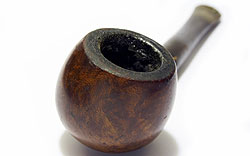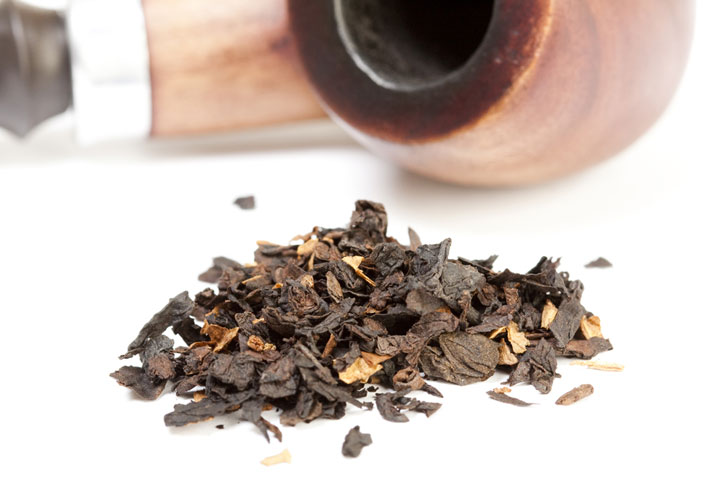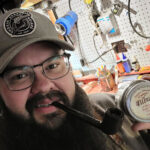By G. L. Pease
 There have been lots of fantastic questions coming in, some of which have presented a bit of a challenge in providing either an informed answer (to dazzle you with brilliance), or at least a convincing load of codswallop (to baffle you with BS). Hey, if it’s good enough for Fox, CNN, and NewsWeak, it’s good enough for me. When my brain is challenged too much, it can grind into reverse without warning, especially early in the morning before my second cup of rocket fuel. When that happens, I scratch my head, and move on to the next question, thus deferring the hard ones until later. Their time will come.
There have been lots of fantastic questions coming in, some of which have presented a bit of a challenge in providing either an informed answer (to dazzle you with brilliance), or at least a convincing load of codswallop (to baffle you with BS). Hey, if it’s good enough for Fox, CNN, and NewsWeak, it’s good enough for me. When my brain is challenged too much, it can grind into reverse without warning, especially early in the morning before my second cup of rocket fuel. When that happens, I scratch my head, and move on to the next question, thus deferring the hard ones until later. Their time will come.
Jeremy queries: How come aromatics always sound better than they taste? Don’t get me wrong, I enjoy aromatics every now and then, but I am always slightly to incredibly disappointed by their flavor, or lack there of. For example: Take CAO’s Eileen’s Dream. On the label it reads, "Irish cream & white chocolate truffles." ‘WOW!’ I think, ‘That sounds fantastic!’ However, when smoking it there is hardly a taste of chocolate and the Irish cream must have run for the emerald hills because it doesn’t taste much like that either. So… what gives? Why don’t aromatics taste like they’re advertised?
 A: This is where I stand in front of the class, draw circles and arrows and complicated mathematical formulae on the board, use some big words, and do a lot of hand-waving to demonstrate my brilliance, leaving you with the realization that if your question isn’t answered to your satisfaction, it’s because you just don’t understand. (I had a couple of professors like that, and though I learned from them nothing useful of their subjects, I did study their methods of pedagogy well, and it really comes in handy at times like this.)
A: This is where I stand in front of the class, draw circles and arrows and complicated mathematical formulae on the board, use some big words, and do a lot of hand-waving to demonstrate my brilliance, leaving you with the realization that if your question isn’t answered to your satisfaction, it’s because you just don’t understand. (I had a couple of professors like that, and though I learned from them nothing useful of their subjects, I did study their methods of pedagogy well, and it really comes in handy at times like this.)
Your question has been around for as long as I can remember, and there doesn’t seem to be a satisfactorily clear answer to it. (Circles and arrows being drawn, now.) The perception of flavor and aroma is a complicated subject under any circumstance, but when pipes and tobaccos get involved, it becomes all but impossible, for a couple of reasons. Before discussing aromatics, let’s think about natural tobaccos, whose distinct flavors shine often through the smoke brightly, but even here, the aroma of the unburned leaf and the smoke’s flavor can be dramatically different. Often, the "pouch aroma" only hints at what the taste will be.
Further complicating matters is the interconnection between our senses of taste and smell, coupled with the odd phenomenon that we rarely, if ever, fully experience the aroma of our own pipes. We’ve all had the experience of walking back into a room in which we’ve been smoking and, only then, realizing how good our tobaccos smell. During the smoking, though, the more subtle aromas, and even some of the dominant ones go almost completely undetected.
 So, if natural tobaccos don’t really taste the way they smell (waving hands), why should an aromatic behave differently? (Here, I pause for dramatic effect, eyebrows raised, so the full force of this brilliant conclusion, masquerading as a question, can work its way into the audience’s thoughts. Your correct response is a nodding head and a thoughtful, "Yes. I see.")
So, if natural tobaccos don’t really taste the way they smell (waving hands), why should an aromatic behave differently? (Here, I pause for dramatic effect, eyebrows raised, so the full force of this brilliant conclusion, masquerading as a question, can work its way into the audience’s thoughts. Your correct response is a nodding head and a thoughtful, "Yes. I see.")
Interestingly, not all aromatic tobaccos exhibit this equally. (More circles and arrows.) Some flavorings, like vanilla, liquorice, some floral scents, actually do work their way into the smoker’s perception, and do so quite intensely, contributing significantly to both taste and aroma. Other flavoring agents may offer little aroma, but can dramatically alter or enhance other flavors that may be present.
But, the fact of the matter is, unfortunately for the pipe smoker, most aromatics are crafted more to please those in the smoker’s presence than the smoker. A friend of mine told me that if he ever acquired absurd wealth, he’d hire someone to smoke a pipe in his presence so he could enjoy the aromas. I told him how he could use a Bunson burner, a ring stand, and a porcelain crucible to the same effect, but he wasn’t having any of that.
Many bulk aromatics are produced from coarse grades of burley tobaccos, largely because of its porosity and its superior ability to "drink" flavoring sauces, but also because of its excellent burning characteristics and its own relatively neutral taste, which doesn’t compete with the flavoring. This means it’s possible to get a lot of sauce bound to the leaf, and therefore a lot of aromatic components, without it becoming like shredded asbestos in the bowl. Unfortunately, these qualities don’t always translate to a truly enjoyable smoke. Virginia based aromatics fare quite a bit better, and though only some of the added flavors will come through the smoke, at least there’s some good tobacco under the blankets to offer the pipester something pleasant.
Wasn’t that more interesting than, "I don’t have a clue?"
 Gene asks: I recently acquired a tin of Union Square. I noticed with this, and with other tobaccos in "flake" form produced at C&D that the flakes are very loose, and often crumble up soon after opening the tin. Can you explain why flakes made at this factory are so loose. Is there a way to make them more firm in manufacturing? Is it limitations of equipment?
Gene asks: I recently acquired a tin of Union Square. I noticed with this, and with other tobaccos in "flake" form produced at C&D that the flakes are very loose, and often crumble up soon after opening the tin. Can you explain why flakes made at this factory are so loose. Is there a way to make them more firm in manufacturing? Is it limitations of equipment?
A: There are a couple reasons for this. Some tobaccos are stickier than others, so some manufacturers use binding agents, sort of like natural glues, to hold their tobaccos together. It can be as simple as added sugars, or pectins, or other organic substances. My flakes are made without these added ingredients, so they don’t always "stick" as tightly together. We also don’t use steam-jacketed presses, which heat the tobaccos up considerably, also making them bind more tightly.
Tobacco leaves have a memory, and it takes a long time in the press to make them solid. But, that long pressing introduces other changes to the leaf, as well. Union Square, for instance, if pressed longer, would ferment more fully, and become a much darker and very different tobacco. Similarly, if it was heated during the pressing process, it would darken, the natural sugars would caramelize, and, again, a different product would emerge at the other end. It’s a matter of trade-offs, here. I have a specific result in mind when I write the protocols for manufacturing my blends. Another manufacturer might take the same leaf, the same recipes, applying their production methodologies, and a completely different product would result.
 From Lawrence: I have been smoking pipes since the early 70’s, and I’m not unskilled when it comes to putting up a decent slow smoke time. But, I have difficulties keeping sliced flake, cake and plug style tobaccos lit. I have tried the fold & stuff; roll & stuff; rubbed out rough and fine, all with limited success in keeping them lit. I have also tried various drying times, and have tried them from very moist to tinder dry, with all combinations of packing techniques. What is your personal preference when it comes to preparation and packing of sliced flakes, cakes, and plugs? Just how do you keep it lit?
From Lawrence: I have been smoking pipes since the early 70’s, and I’m not unskilled when it comes to putting up a decent slow smoke time. But, I have difficulties keeping sliced flake, cake and plug style tobaccos lit. I have tried the fold & stuff; roll & stuff; rubbed out rough and fine, all with limited success in keeping them lit. I have also tried various drying times, and have tried them from very moist to tinder dry, with all combinations of packing techniques. What is your personal preference when it comes to preparation and packing of sliced flakes, cakes, and plugs? Just how do you keep it lit?
A: I’ve talked with a lot of smokers about their methods for preparing and smoking flakes, plugs, lanyards and cube-cuts, and have not been surprised by the variety in their answers. (I’ve always said, ask 100 pipe smokers the same question about technique, and you’ll get at least 101 answers, all of them right.) As is so often the case in this pastime, what works for one might fail miserably for another.
Personally, I prefer to rub flakes and sliced plugs quite fine, and pack the bowl somewhat loosely, and I prefer virginia based tobaccos to be slightly damp, but certainly not soggy. (If the tobacco is slightly springy when pressed together, it’s about right.) This has generally worked pretty well for me, and I don’t seem to have too many problems keeping all but the most stubborn tobaccos lit, but, I also pay little mind to how many times I have to relight the pipe.
When it’s hard to keep a pipe lit, it’s often a matter of it being packed too tightly, a condition worsened by overzealous or too -frequent tamping. Ironically, the finer the prepared leaf, the more easily it will light, but the more prone it is to being packed too densely. Try a more delicate hand when filling the bowl, and don’t tamp until it’s absolutely necessary, and then, the weight of the tamper is all the pressure that should be applied.
On the other hand, I entered only one slow-smoking contest, and was the first one out, so I’m not in any position to claim expertise. (I couldn’t stand the tobacco provided, so in a fit of self-delusion, I decided to proclaim myself the winner anyway, though I never could talk the contest organizers into giving me the trophy.)
Jeff posts: Since my house was built since 2000 it was mandatory that the septic system have a filter on the output line between the tank and the drain field. Once a year or when the wife notices the toilets not flushing correctly I have to open one of the access panels, pull the filter out and hose all the ‘crap’ out of it. This happened last night. Since I was going to be smelling some rather nasty stuff I thought it would be a good idea to light up a pipe while I performed this unpleasant task. The C&D Haunted Bookstore seem a good choice. I loaded my ‘yard pipe’ an old Cary Magic Inch and proceeded with the chore. When I had the tank opened and pulling the filter I think I gagged a bit and the pipe drop from my mouth in the septic tank! The pipe promptly floated back to the top and I had a choice, do I retrieve it or leave it? Thinking it might cause problems with the system I fished the pipe out. I then threw it into the trash…Did I do the right thing or should I have cleaned it up and sold it on eBay?
A: I’ve had a lot of great experiences with eBay pipes, but a few real "stinkers," too. Having read your question, I may now understand why, and finding myself deeply disturbed by the images it formed in my naive and impressionable mind, I’ve come to the conclusion that you wouldn’t have been the first to have "cleaned it up and sold it on eBay."
I’ll never be able to look at pipes on eBay in quite the same way. Thanks a lot, Jeff.

Rob asks: I just finished a tin of 2000 Samarra which was one of the BEST tobaccos I’ve ever smoked. Then I popped open some Renaissance (also 2000) and found it SPICIER than the Samarra. Now, Samarra has Cyprian Latakia and Renaissance has Cyprian and Syrian. Is it the Syrian Latakia that provides the spicy edge?
A: Thanks, Rob! I’m glad you enjoyed that Samarra. Isn’t it wonderful what a few years (or a decade) can do?
The difference between these two blends is more than just the Latakias used. Renaissance had a more dominant oriental component, which was probably responsible for some of the spice you noticed, and the inclusion of a little Perique in Samarra softens the edges. But, yes, the interplay of the Syrian and Cyprian was significant in that blend. The Cyprian provided its deeper, darker, more earthy flavors, whilst the Syrian offered some brighter, woody, fino sherry-like notes. The two tobaccos are as different as they are alike, starting life as different leaf types, and then being fumigated over different smoldering woods. The Syrian tends to want to hog the stage, and so has to be used judiciously, but when carefully balanced, they can play really well together, offering some unique flavors to the smoker. I don’t know why more blenders didn’t work with the two together during that wonderful time when both were easily obtained.
Finally, Tim asks: I have always wanted a "real" Calabash pipe made out of a Gourd. I believe that is the way they were originally made in the day. Now, they are porcelain or something . Do you know where I can get a real one . Any thoughts on the subject? Thanks, Tim.

To get an authoritative answer to your question, we turned to Gary Schrier, author of The History of the Calabash Pipe, available from Briar Books Press.
"The traditional ‘bash was always made with an African gourd body and Turkish meerschaum cup. But, since its inception ca. 1903, some produced versions in briar, clay, and porcelain. In the ’90s, a Turk began cutting a standardized mahogany blank on a CNC lathe in the shape of a gourd, and they received lukewarm response generally. At this time, there are two makers of the original gourd calabash: one is Strambach in Vienna (available through Synjeco), the other being Fikri Baki in Turkey. Both pipes are well made. The Viennese brand uses pressed meerschaum, while the Turk’s is solid block. Both will smoke equally well; the gourds will color equally well; but the solid cup will color more thoroughly if smoked without overheating the cup. The real difficulty with this pipe type is that no one in South Africa is growing the gourds any longer. By far, Strambach probably has the best and only good supply remaining worldwide."
That’s it for this issue. There are still some wonderful questions in the queue, but I’m always thrilled to see the new ones, so keep ’em coming. (SUBMIT QUESTIONS HERE.)
-glp

Since 1999, Gregory L. Pease has been the principal alchemist behind the blends of G.L. Pease Artisanal Tobaccos. He’s been a passionate pipeman since his university days, having cut his pipe teeth at the now extinct Drucquer & Sons Tobacconist in Berkeley, California. Greg is also author of The Briar & Leaf Chronicles, a photographer, recovering computer scientist, sometimes chef, and creator of The Epicure’s Asylum. |
















Excellent answers Mr. Pease, and some great links, Thanks.
With respect to Jeremy’s observation that aromatics never taste as good as they’re described, Milton M. Sherman, formerly of The American Tobacco Co., suggested in his (c. 1970) book, “All About Tobacco”*, that for manufacturers of cavendish style aromatics (in contrast to cased Burleys), “the taste factor, rather than the aroma, is the primary concern…” Though I may be a victim of the power of suggestion (it’s been known to happen before), I tend to agree.
.
http://tobaccodocuments.org/nysa_ti_s1/TI56720085.html?pattern=&ocr_position=&rotation=90&zoom=750&start_page=1&end_page=75
Thanks for an entertaining article.
That’s a pretty neat link Cortez, and a good point too.
Another great installment! Thanks for the info Greg!
Cortez, All About Tobacco is certainly an interesting read, and I don’t disagree with Sherman that blenders consider taste over aroma, at least for the most part. But, the fact remains that aromatic tobaccos rarely taste as they smell. And, really, why should they? Natural pipe tobaccos don’t taste exactly as they smell, either! (I suppose that could have been a shorter answer, though a somewhat less entertaining one!)
Great article!
Thanks, Greg!
I also add that I have a Pioneer Calabash and a CAO Sherlock Holmes commemorative Calabash and both are wonderful smokers with exception that they are too heavy and awkward to smoke doing anything else other than holding them in the hand. But you can read, watch TV or listen to music but no yard work or walking about.
Jokingly if you’re seen walking about with one, people will inquire where is your deerstalker and where is Watson. It’s happened to me (LOL).
Funny that CAO Eileen’s Dream should be singled out, as in my mind it is the best example of great tin note + great room note + missing taste. Was thinking of sprinkling some latakia in my next bowl just to see what happens? Matter and antimatter collide? 🙂
Great article
Simon
Greg, thanks for a well written Q&A as always.
Awesome article Greg!
I bought a BC gourd calabash in 2004, brand new, and it is still smoking well. I saw another one for sale as recently as 2008 in a tobacco shop. Don’t know if they have recently stopped making it, though.
Hi about 25 years ago Peterson’s ( not related to the company in Ireland) had three stores in New York and a mail order house in New Jersey. They had a bulk blend called Peterson’s 600. It was a rough cut all natural tobaco with Virgina butterfly and other great tasting tobaco. The left the scene and I have not been able to find this blend anywhere. I contacted Perterson’s in Ireland and they told me that they never had a store in New York nor do they sell bulk tobaco. Can you help me?
Great article, Greg. Fun to read and very informative. Thanks for sharing your knowledge with us.
para cuando sus tabacos en españa